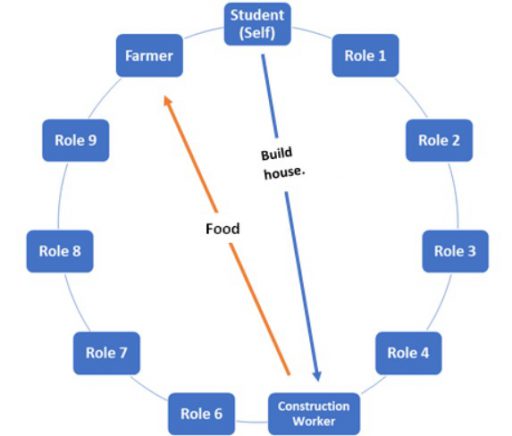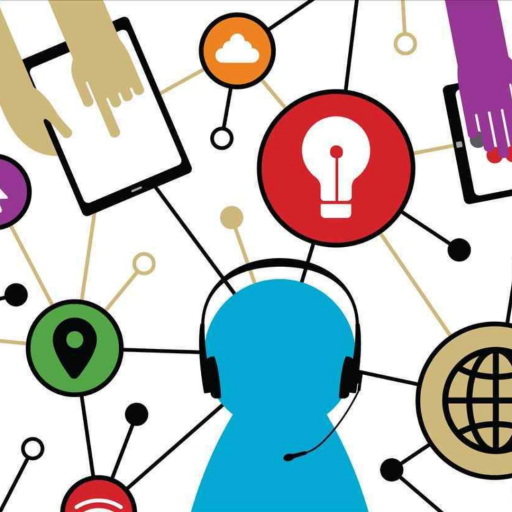

KLE November Activity – WE ARE COMMUNITY
EXPECTED OBJECTIVES
- Students will be able to identify interdependence that exists in our society.
EXPECTED OUTCOMES
- Students will describe how we are interdependent on others and its importance in their own life.
SKILLS AND VALUES
- Skills - Active listening, and logical thinking.
- Values: Diversity
SESSIONS’ OVERVIEW
| S. No. | Session Details | Estimated Time Required |
| 1 | Step 1: Introduction
Step 2: Activity Step 3: Debrief |
45 Minutes |
MATERIAL REQUIRED
3-4 balls of yarn (this can be re-used), Name Tags
STEPS OF THE ACTIVITY
Session 1: For a 45 min session Step 1-3
Step 1 - Introduction
Time: 8-10 minutes
- The teacher is suggested not to disclose the outcome/purpose of the activity at the beginning.
- Begin the activity by asking the students to make a list of people they see as a part of their society: farmers, children, teachers, parents, drivers, house cleaners, grandparents, construction workers, etc.
- Give each student one of the roles and have them write it as a name tag. Students need to wear these name tags.
- Teachers can divide the students into smaller groups of 8-10 students to play the game. In this case, roles can be repeated in the group.
Step 2 – Activity
Time estimated: 30 minutes.
1. Clear the room, keep all the furniture in the corner of the room or go out to play this game.
2. Ask students to stand in a circle. Give a few students the available yarn balls and ask them to tie one end of their ball of yarn around their waists. Alternatively, students can sit in a circle with yarn tied around their index finger.
3. Students must now try to discover links between themselves and other players. For example, the farmer might depend on the construction worker to build a new house or farm and the construction worker might depend on the farmer to produce food for him to eat. Students must figure out how one role is dependent upon the other in this similar way.


4. Once they have agreed on this dependence, they should pass their balls of yarn to each other, showing the connection.
5. While throwing the yarn they need to loudly say the connection. For example: I am a student and I depend on my teacher for learning (By throwing yarn ball to teacher) and so on.
6. Try not to exchange the yarn balls more than 2 times between 2 players to make and realize more connections in social circle.
7. Play the game till everyone has got one chance or as per the time permits.
Points to be kept in mind.
- Try to create as many connections as possible. Support the group to be creative to come up with some of the links.
- Help the students to list down as many roles as possible from their day-to-day life, like mother, father, brother, sister, teacher, barber, milkman, farmer, vendor, house cleaner, driver, businessperson, police, politician, lawyer, etc. If more number of students are there, you can specify the roles like Vendor can be – vegetable vendor, flower vendor, etc.
- Let the students be seated in the same groups and do the debrief.
Step 3 – Debrief
Time: 5-8 mins
Ask students the following questions to debrief the activity:
- Are all players the same in age, caste, race, religion, and socio-economic status? (Answer – No)
- Imagine if we remove one or two players in between. What will happen? (Yarn will be broken, chaos, some needs will remain unsatisfied, etc.)
- What did we learn from this activity?
Reflection Sheets, Activity Report & Feedback Form
Teachers kindly fill in the feedback form, remind office bearers to fill activity report and remind students also to fill up the reflection sheets.





